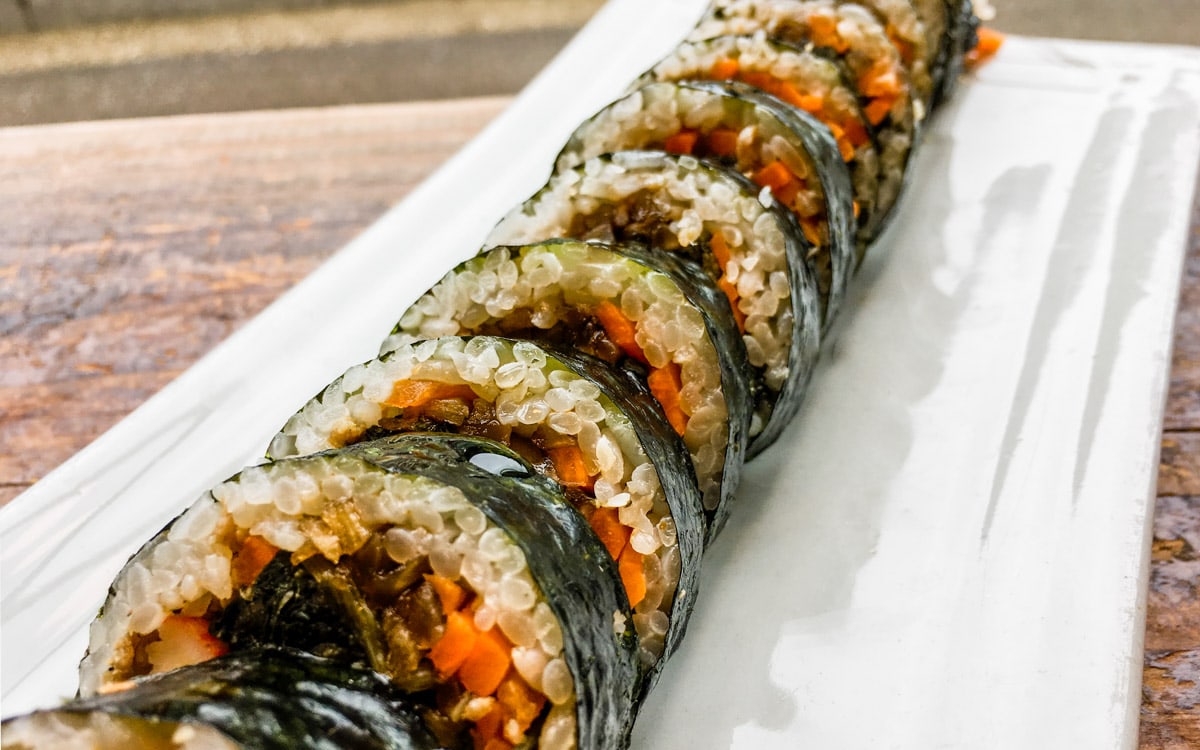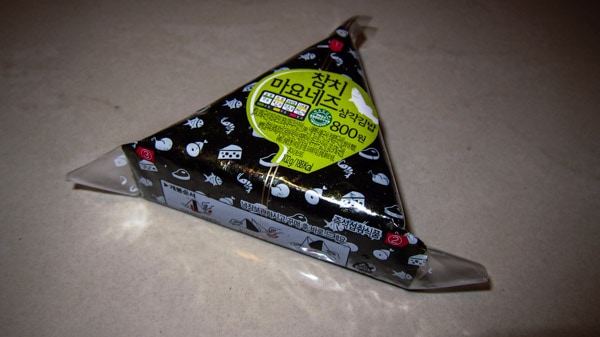
Gimpap, or kimbap, is a dish where streamed white rice (bap) and other ingredients are rolled in sheets of seaweed (gim) and sliced into smaller pieces. The dish can be found all over Seoul in formal and fast food restaurants, sold by street vendors, and in convenience stores. Though similar to the look of sushi, gimbap does not use rice vinegar but instead sesame oil.
The word gimbap literally means “seaweed rice.” The most basic form of the dish uses seaweed and short grain rice. When only rice and seaweed are used, the dish is known as Chungmu Gimbap. The rice is usually seasoned with salt and sesame oil (perilla oil). The seaweed is a laver variety that is dried and pressed and often brushed with sesame oil.

Gimbap can be filled with an almost endless variation of meat and vegetable fillings. Meat and protein fillings include beef, cured meats, seafood such as fish cakes, spicy tuna, squid, and imitation crab meat, and eggs. Vegetables include carrots, cucumbers, spinach, kimchi, and pickled radish (danmuji).
The steamed rice and fillings are placed onto the seaweed and rolled. The roll is then sliced into smaller, bite sized pieces and served with more pickled radish.
A variation of the dish is known as samgak gimbap. Instead of a circular roll and slices, the seaweed is shaped into a triangle. This snack, which has many variations of fillings, is popular at convenience stores all across Seoul.
Click here to read more about Korean dishes
Last Updated on Dec 28, 2021